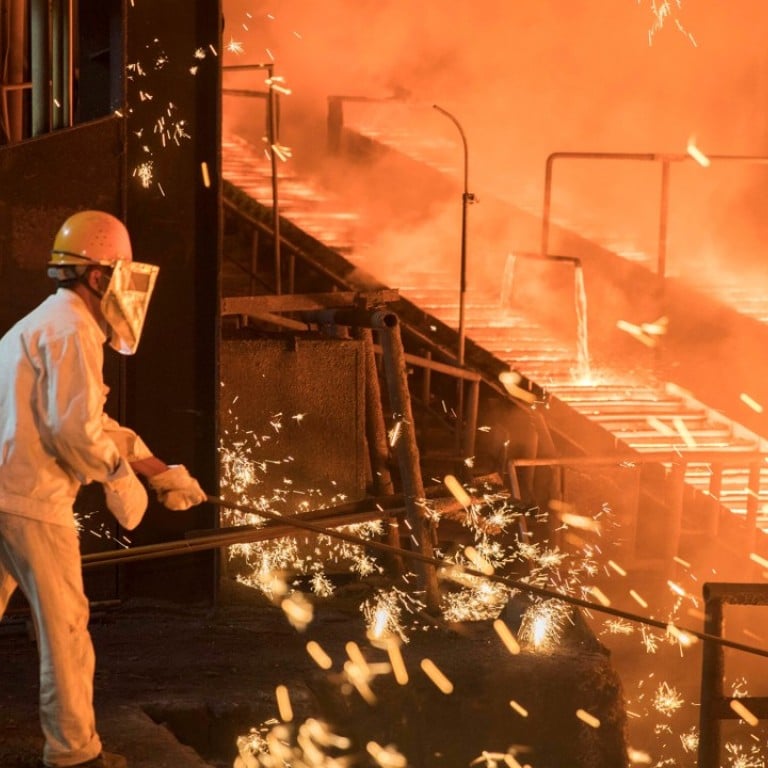
Update | China’s manufacturing sector cools, weaker than market forecasts
Industry hit by pollution regulations forcing steel plants and some factories to limit production over the winter
Growth in China’s manufacturing sector cooled more than expected in October in the face of a weakening property market and tighter pollution rules that are forcing many steels mills, smelters and factories to curtail production over the winter.
While still easily in expansion territory, China’s monthly official factory survey also showed unexpected weakness in new export orders, which had been expected to pick up heading into the peak year-end shopping season.
The data gives global investors their first look at business conditions in China at the start of the fourth quarter, with the government’s punishing war on smog adding to uncertainty amid early signs of a slowdown in the world’s second-largest economy.
The official Purchasing Managers’ Index released on Tuesday fell to 51.6 in October, from to 52.4 in September, which was the strongest in over five years.
It was the weakest reading in three months, but remained above the 50-point mark that separates growth from contraction on a monthly basis.
Analysts surveyed by Reuters had forecast the PMI would fall slightly to 52.0, but still point to growth in the sector for the 15th straight month.
A recovery for China’s manufacturing and industrial firms – boosted by government spending, a resilient property market and unexpected strength in exports – has helped the economy post better-than-expected growth of nearly 6.9 per cent through the first nine months of this year.
Profits for the country’s industrial powerhouses surged 27.7 per cent in September, the most in nearly six years, as environmental inspections and the start of plant closures in smog-blighted northern provinces sparked fears of supply shortages and sent prices of finished goods like steel and copper sharply higher.
Earnings have been boosted by surging factory gate prices, but the latest survey showed input price gains slowed considerably, with the reading at 63.4 compared to 68.4 in September and the weakest since July.

Prices of steelmaking raw materials such as iron ore and coking coal have started to dive on fears of excess supply as the winter output curbs kick in, which should start to weigh on mining companies.
The latest pollution closures come on top of ongoing government efforts to trim down and upgrade the country’s bloated industrial sector by shutting down outdated capacity, which has also helped support producer prices.
A sub-reading for output fell to 53.4 in October from 54.7 the previous month, still solid but matching the slowest growth over the last seven months.
At China’s recently-concluded Communist Party Congress, President Xi Jinping said the country would pursue high-quality rather than high-speed growth while reinforcing a pledge to win the war on pollution.
Growth in China’s services sector also eased in October, but continued to show solid expansion, a sister survey showed.
The official non-manufacturing Purchasing Managers’ Index fell to 54.3 from 55.4 in September, which was the strongest reading since May 2014.
A sub-reading for the construction sector fell to 58.5 from 61.1 in September.
The services sector accounts for over half of China’s economy, with rising wages giving Chinese consumers more spending power.
China’s leaders are counting on growth in services and consumption to rebalance their economic growth model from its heavy reliance on investment and exports.

